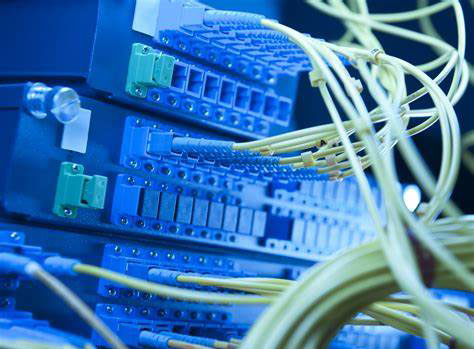Optical Fiber Connection and Measurement
Sat, Apr 09 by ATO.com
There are three main methods of connecting fiber optics, each with its own advantages and disadvantages. And different methods of connection have different precautions, so make sure you understand the characteristics of each method and choose the one that works best for you. This time, we will show you how to connect and measure optical fibers.
Optical Fiber Connection
The methods mainly include permanent connection, emergency connection and active connection.
- Permanent fiber optic connection (also known as thermal fusion): This connection is to use a high-voltage arc to melt the sections of the two optical fibers, and at the same time, use a high-precision motion mechanism to smoothly advance the two optical fibers to merge into one and connect them together to realize the coupling of the optical fiber mode fields. Generally used in long-distance connection, permanent or semi-permanent fixed connection. Its main feature is that the connection attenuation is the lowest among all connection methods, with a typical value of 0.01~0.03dB/point. However, when connecting, special equipment (optical fiber fusion splicer) and professionals are required to operate, and the connection point also needs to be protected by a special container.
- Emergency connection (aka cold connection): It mainly uses mechanical and chemical methods to fix and bond the two optical fibers together. The main feature of this method is that the connection is fast and reliable, and the typical attenuation of the connection is 0.1~0.3dB/point. However, the long-term use of the connection point will be unstable, and the attenuation will increase greatly, so it can only be used for emergency use in a short time.
- Active connections: Active connections are a method of connecting sites to sites or sites to fiber optic cables using various fiber optic connection devices (plugs and sockets). This method is flexible, simple, convenient and reliable, and is mostly used in computer network wiring in buildings. Its typical attenuation is 1dB/connector.
Optical Fiber Measurement
The main purpose of optical fiber measuring is to ensure the quality of system connection, reduce fault factors and find out the fault point of optical fiber when fault occurs. There are many detection methods, mainly divided into manual simple measurement and precision instrument measurement.
- Manual simple measurement: This method is generally used to quickly detect the on-off of optical fibers and to distinguish the fibers made during construction. It uses a simple light source to inject visible light from one end of the optical fiber, and observe which one emits light from the other end. Although this method is simple, it cannot quantitatively measure fiber attenuation and fiber breakpoints.
- Precision instrument measurement: If using an optical power meter or an optical time domain reflectometer (OTDR) to quantitatively measure the optical fiber, the attenuation of the optical fiber and the attenuation of the joint can be measured, and the position of the breakpoint of the optical fiber can also be measured. This measurement can be used to quantitatively analyze the causes of fiber optic network failures and evaluate fiber optic network products.


